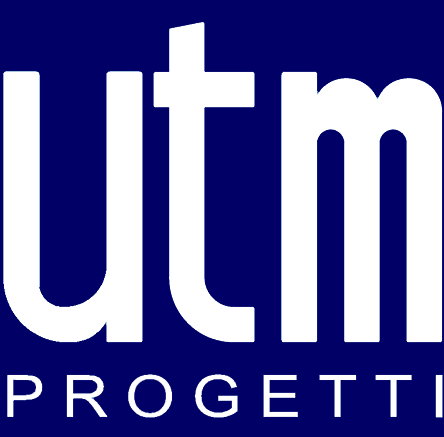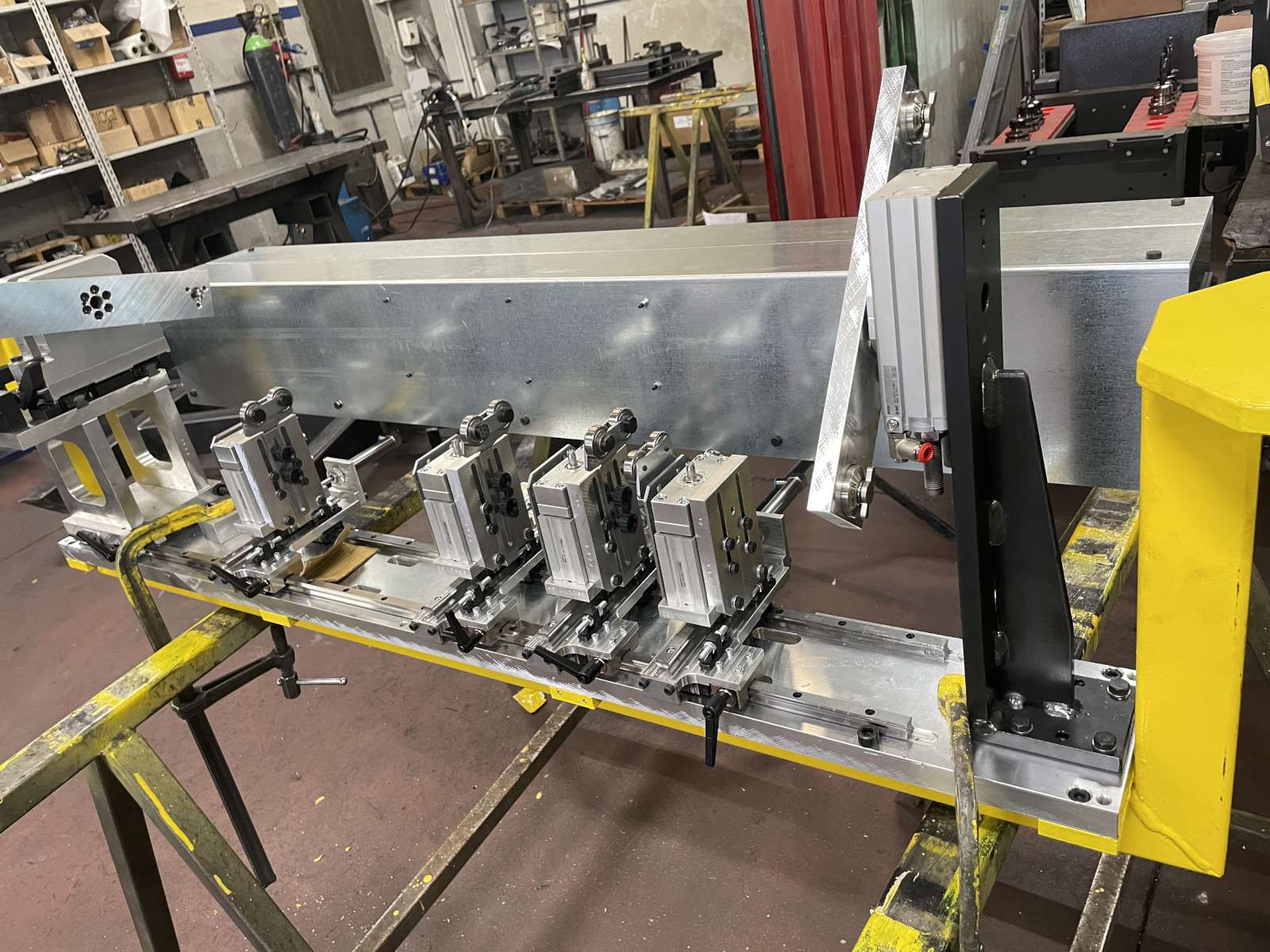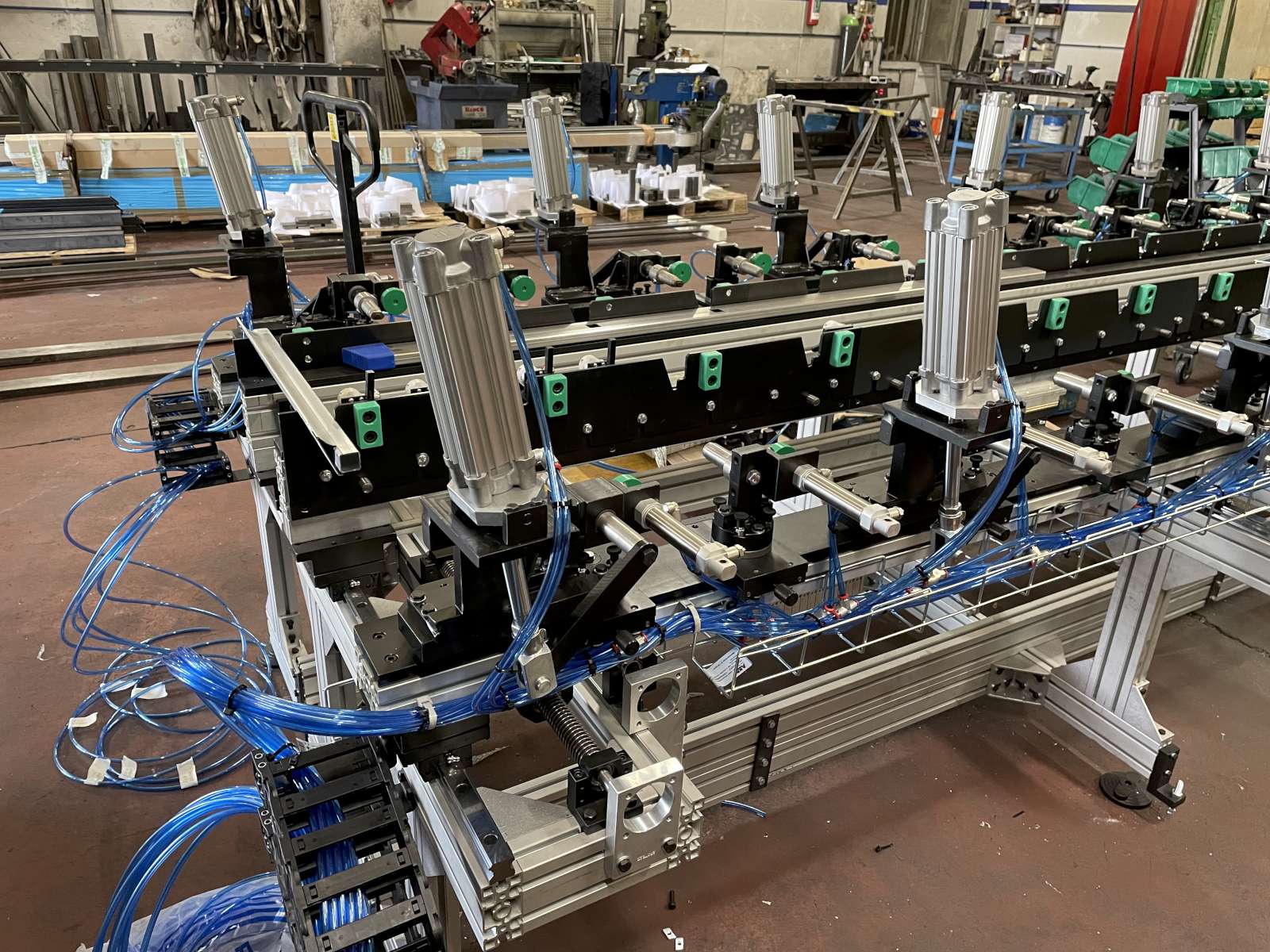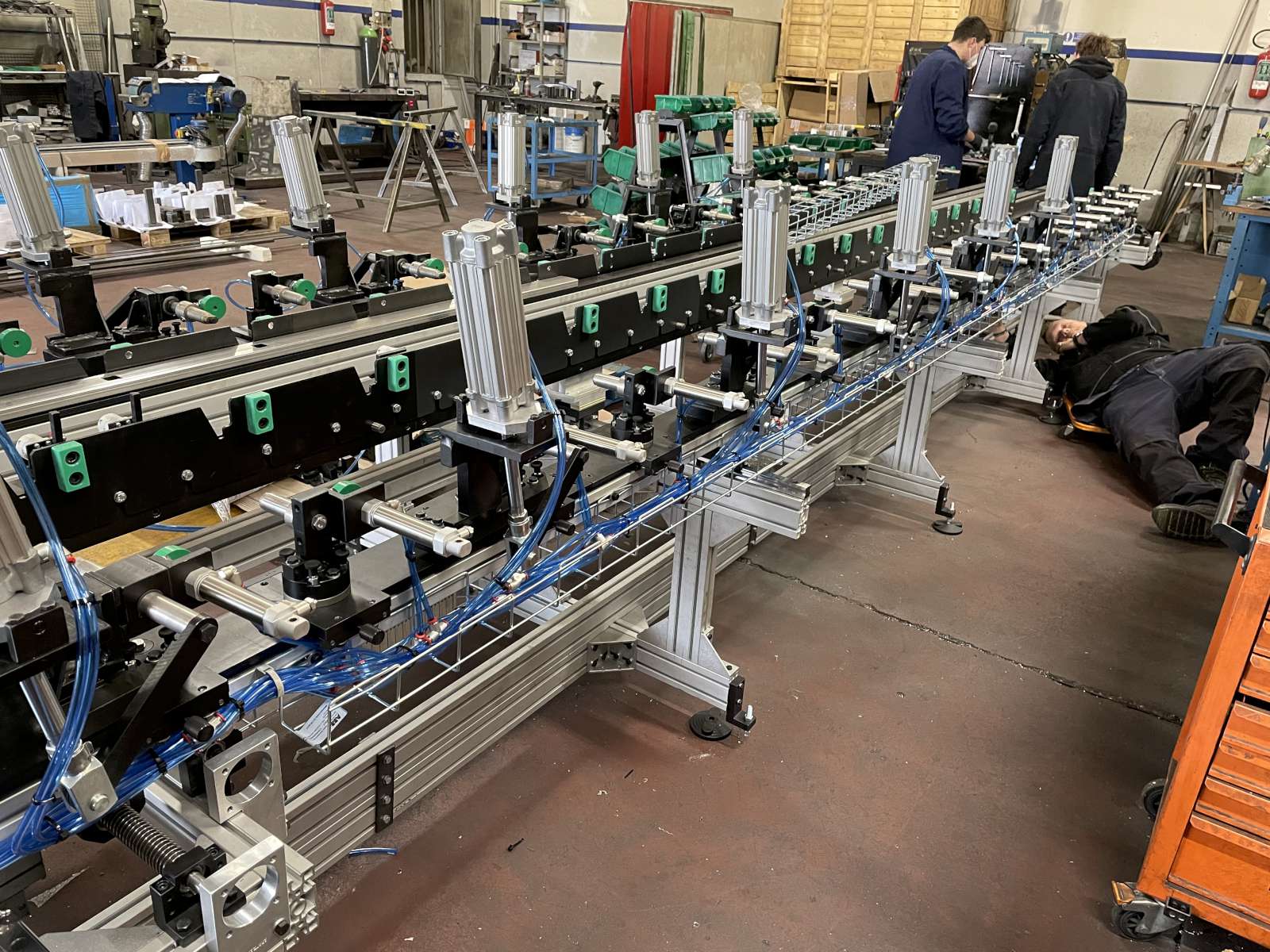PRODUCTION LINES
Automatic production lines are highly integrated and automated systems where machinery, robots, and advanced technologies work in synergy to manufacture products or components continuously, without direct manual intervention.
These systems are designed to maximize production efficiency, reduce processing times, and ensure consistent quality in finished products.
MAIN FEATURES
- Automatic workstations:
Each station performs a specific operation such as assembly, welding, riveting, stamping, or quality control. - Handling systems:
Conveyor belts, robotic arms, or rotating platforms move parts along the production line. - Control units:
Software systems manage and monitor the operation of the line, synchronizing processes and collecting data to optimize production. - Sensors and machine vision systems:
Devices detect the presence and correct positioning of components, identify defects, and ensure process accuracy. - Safety devices:
Protective barriers, safety scanners, and emergency stop buttons safeguard operators and prevent accidents.
FUNCTIONING
- Material loading:
Raw or semi-finished materials are introduced into the production line manually or automatically. - Execution of operations:
Each automatic station performs a specific phase of the production process (cutting, assembly, welding, painting). - Product handling:
Automated systems transfer the product between various stations. - Quality control:
Sensors and vision systems verify product compliance with technical specifications. - Finished product unloading:
Completed products are transferred to a storage or packaging area.
ADVANTAGES
- High productivity:
Continuous production capacity with fast cycles and minimal downtime. - Consistent quality:
Reduction of human errors thanks to controlled and repeatable processes. - Operational efficiency:
Optimization of resource consumption and waste reduction. - Traceability:
Real-time monitoring and data storage of the production process. - Flexibility:
Ability to reconfigure lines to produce product variants without prolonged interruptions. - Enhanced safety:
Reduced risks for operators by automating hazardous operations.
APPLICATIONS
Automotive industry
Assembly of vehicles and mechanical components.
Electronics industry
Production of printed circuit boards and electronic devices.
Food industry
Packaging and processing of food products.
Pharmaceutical sector
Production and packaging of medicines.
Plastics industry
Molding and assembly of plastic components.
TYPES OF AUTOMATIC PRODUCTION LINES
Rigid lines
Optimized for the production of a single high-volume product.
Flexible lines
Designed to produce different product variants through modular configurations.
Hybrid lines
Combine automated processes with manual interventions for complex products.




